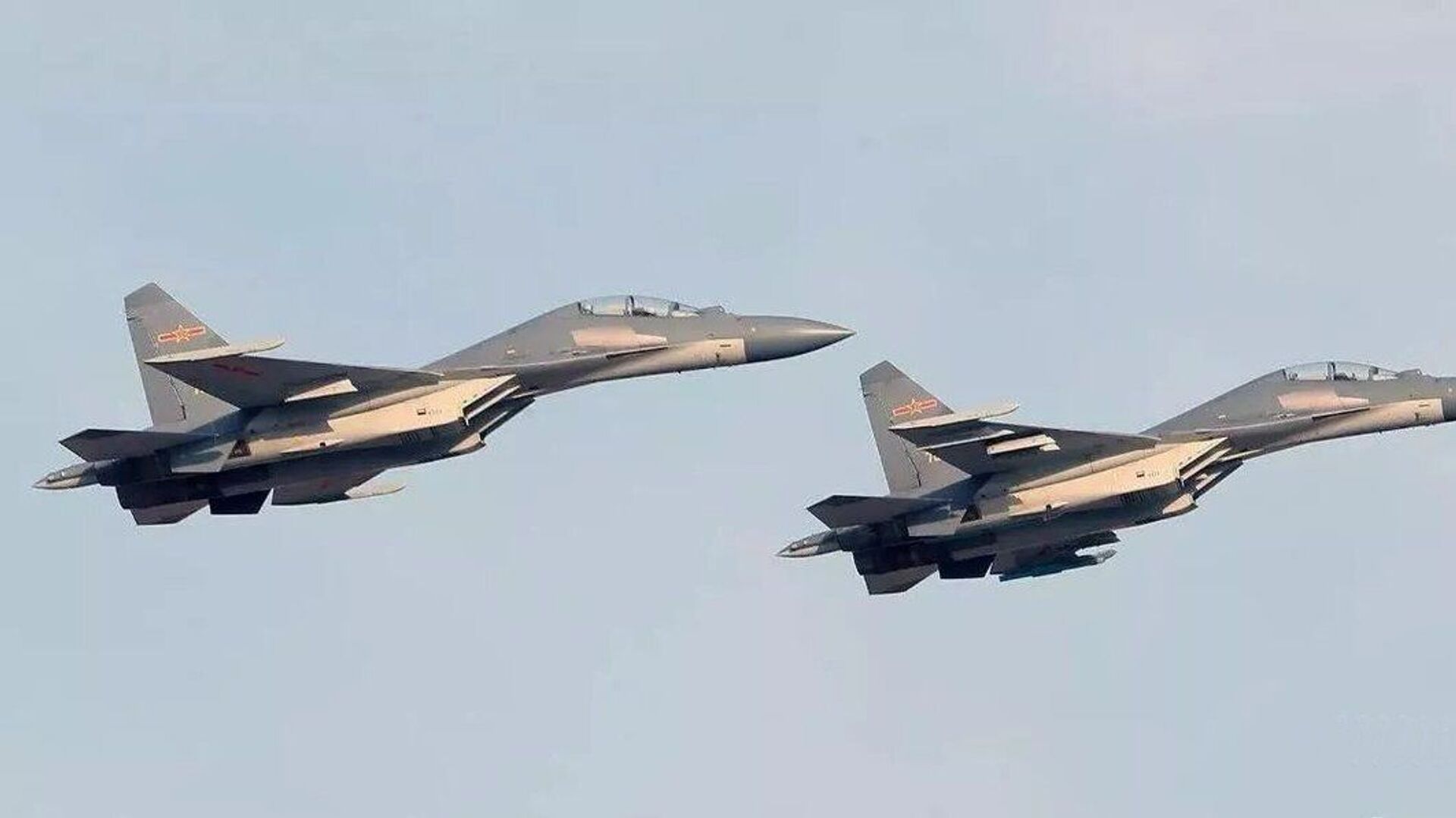China Warns Canadian Spy Planes Against ‘Adventurist’ Moves Amid Tense Close-in Flights
18:17 GMT 06.06.2022 (Updated: 18:44 GMT 06.06.2022)

© Chinese Ministry of National Defense
Subscribe
The US and Canada have stepped up spy plane flights over the waters near China in recent years, passing dozens of planes each month across the South China and Yellow Seas. At times these have posed as civilian airliners, creating a danger to civilian aircraft flying through the region.
Beijing has lodged a counter-protest to Ottawa over fly-bys with reconnaissance aircraft off the Chinese coast last week, calling the flight plans “provocative” and urging Canada to adopt a “prudent and practical” policy toward China.
On 1 June, the Canadian Defense Ministry accused People’s Liberation Army Air Force (PLAAF) pilots of “unprofessional” behavior during air encounters during operation NEON, Ottawa’s mission to monitor North Korean compliance with United Nations sanctions.
According to Ottawa, this behaviour included close approaches by PLAAF fighters that forced a change of course by Royal Canadian Air Force (RCAF) CP-140 Aurora aircraft, a strategic Intelligence Surveillance and Reconnaissance (ISR) unit derived from the US Navy’s P-3 Orion submarine hunter. In one instance, it was alleged Chinese pilots gave the Canadians “the finger” replicating a famous scene in the 1986 film ‘Top Gun’.
“Such interactions, which occur in international airspace during UN-sanctioned missions, are of concern and of increasing frequency,” the Canadian Defense Ministry added.
However, Beijing fired back on Monday with strong words of its own which challenged Ottawa's account of events.
Speaking to reporters on Monday, Zhao Lijian, a spokesperson for the Chinese Foreign Ministry, noted that “Canadian military aircraft have recently increased close-in reconnaissance and made provocations to the Chinese side in the name of implementing UN Security Council resolutions. This is a dangerous act against China’s national security and the safety of Chinese and Canadian front-line personnel. China firmly opposes this.”
“UN Security Council resolutions have never mandated any country to deploy forces and conduct surveillance operations in jurisdictional air and sea areas of other countries for the purpose of identifying sanctions evasion activities. China firmly rejects all moves that endanger China’s sovereignty and national security in the name of implementing resolutions,” he added.
The UN has banned Pyongyang from acquiring nuclear weapons or long-range ballistic missiles and stringent US sanctions seek to punish the small socialist state. Amid a breakdown in relations in recent years, the Democratic People’s Republic of Korea (DPRK) began new missile tests, prompting the US and South Korea to fire off their own missile tests in response on Sunday.
“In response to the Canadian side’s provocative acts and unfriendly and unprofessional maneuvers, the Chinese military promptly took legitimate and forceful measures in response that are safe and professional,” Zhao added. “China urges Canada to see the severity of the incident and refrain from taking any adventurist or provocative moves. Otherwise all the grave consequences will be borne by the Canadian side.”
In recent years, the US military has stepped up spy plane flights near the Chinese coastline arguing that China is its chief rival in “great power competition” and a major threat to the “rules-based international order”. These have included multiple flights per day, and at times have seen US aircraft switch their international transponder codes in mid-flight to appear to be civilian airliners. In one instance, a Taiwanese airliner nearly collided with a US Air Force tanker aircraft on a mission to refuel one of those spy planes.
Same USAF RC-135U #AE01D5 is operating along the coast of Guangdong and Hainan now, June 6. Of the US reconnaissance aircraft, RC-135U is perhaps the most aggressive, and its main target is likely to be radars deep in mainland China instead of Chinese maritime activities. https://t.co/fOFIwe3h2p pic.twitter.com/dVecRSpeKn
— SCS Probing Initiative (@SCS_PI) June 6, 2022
Recently, the think tank South China Sea Probing Initiative (SCSPI) also tracked a US Air Force RC-135U Combat Sent, an airliner-sized spy plane that records intelligence on adversaries’ radar emitters, as it flew along nearly the entire length of the Chinese coast, at times just 29 nautical miles from the border.



